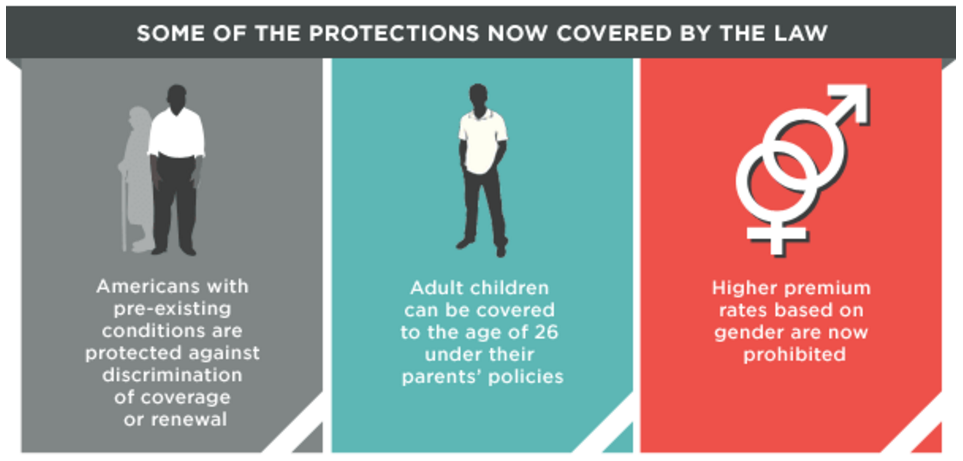Will the US Embrace the Affordable Care Act in Future Years?
There has been a multitude of partisan debate against the Affordable Care Act and many are concerned whether some of these new healthcare models will truly bring a difference to medical spending.

- The Patient Protection and Affordable Care Act has had many obstacles in the way when revolutionizing the healthcare insurance field and broadening access to medical care for the US population. What does the future hold for the Affordable Care Act and will it continue to see opposition or become embraced in American society?

Before answering that question, it is important to understand the history and development of the Medicare and Medicaid programs including healthcare payment structures and claims processing.
Before the legislation was passed in 1965 to develop the Medicare program and other healthcare coverage options, families had few options when it came to paying for their medical needs, according to the Center for Medicare Advocacy.
Before Medicare’s time
For example, if a person is hospitalized for only a short time, their stay may still cost thousands of dollars. This is clearly not affordable for many citizens around the nation. There are several outcomes that led to the development of the Medicare program including loss of income, high healthcare costs, and the financial effects of illness on society.
As the 1900s wore on, medical services became more mature, modernized, and complex. This led to the costs of healthcare to jump significantly. No longer were citizens allowed to barter with goods or services for medical care, the report from the Center for Medicare Advocacy stated. The need to spend funds on medical care left many families at risk of financial ruin if they became sick.
As such, many European countries developed government-run healthcare coverage in the 1920s, but the United States did not follow the example set by these nations. However, as early as 1906, the American Association of Labor Legislation (AALL) pushed for the passage of state-run public health insurance programs.
Early efforts to create public health insurance systems did not take off and legislative actions were defeated. In the 1940s, Franklin Delano Roosevelt became President of the United States and there were suspicions that his administration would develop a national healthcare insurance program.
The Wagner-Murray-Dingell bill were proposed to support a national health insurance plan to be operated through Social Security. At first, Roosevelt did not support this legislation but, in 1944, changed his stance and showed full backing of public healthcare coverage. However, his death in 1945 led to a change in the administration’s plans.
Medicare’s passage
It wasn’t until Lyndon B. Johnson took the presidency in 1964 that the Medicare program was passed into law. The other reason for the passage of the Medicare program was due to a large Democratic representation in Congress.
The Medicare program took effect in 1965 and has gone various measures to improve its management over the years such as the Balanced Budget Act of 1997 and the Medicare, Medicaid, and SCHIP Benefits Improvement and Protection Act of 2000.
However, healthcare costs have been rising steadily over the last few decades and, if it is to continue, the Medicare program will see some problems in its future. One issue is that the federal government does not have the same opportunity as private health payers to negotiate drug prices with pharmaceuticals.
The continuance of rising medical spending as well as a lack in healthcare quality has led the federal government to move forward with new plans, which is why the Affordable Care Act was passed and a number of payment reforms such as the development of Accountable Care Organizations and bundled payment systems were created.
Future of Affordable Care Act: Will opposition bring it down?
The Affordable Care Act has brought significant reforms meant to improve quality of care and reduce costs. This includes both the patient-centered medical home concept as well as the standard Accountable Care Organization.
There has been a multitude of partisan debate against the Affordable Care Act and many are concerned whether some of these new healthcare models will truly bring a difference to medical spending.
On one side of the debate, Steven Brill, author of America's Bitter Pill: Money, Politics, Backroom Deals, and the Fight to Fix Our Broken Healthcare System, explained at a panel that the Affordable Care Act does not go far enough in tackling rising medical costs.
“The debate that goes on and is worth having is whether and to what extent the law does anything to—to tackle costs. And one way to answer that question is to do what actually isn't that impossible, which is read the bill, which embarrassed to say that I have, repeatedly,” Brill began.
“And there really isn't much except at the margins that requires the cost be saved. There are voluntary programs that the Center for Medicaid and Medicare Services has initiated with mixed success that—that are aimed at tackling the care delivery issues associated with cost.”
“But if you look at the spectrum of, you know, where do the high costs come from, they come from so-called nonprofit hospitals making exorbitant profits. There's nothing in the law that does anything to change that in terms of what they can charge, and how they can overcharge.”
“They come from the exorbitant price of drugs in this country, different from every other country. There's zero in the law that does that. And they come from other costs and—and accountability issues related to medical devices, and there's really nothing in the law that does anything to attack that.”
In one example, the very early years of the Accountable Care Organization shows that only 25 percent of ACOs actually earn shared savings through the Medicare Shared Savings Program.
However, in future years, as these models become more established and all kinks are worked out, it is possible that there will be a drop in medical spending. A report from the Commonwealth Fund shows that the Affordable Care Act has led to approximately 16.4 million previously uninsured people gaining healthcare coverage since 2010.
Also, the report finds “that the law is starting to change the way care is paid for and delivered to patients.” The law supports value-based care payment models as well as the spread of accountable care and the patient-centered medical home. The graphic below shows how care coordination within an ACO brings more quality services to the patient community.
“Additionally, the Center for Medicare and Medicaid Innovation, created by the law, is testing an array of changes to how health care providers are organized and paid that together are affecting thousands of hospitals, 60,000 clinicians, and 2.5 million patients across all 50 states,” the Commonwealth Fund stated.
“Health spending growth has slowed in recent years, and there are signs—such as falling rates of hospital-acquired infections—that care is improving.”
As such, it is possible that the Affordable Care Act may be viewed favorably in coming years, as some of these new models of care and payment show real value to patients, providers, and insurers.
Image Credit: Commonwealth Fund


